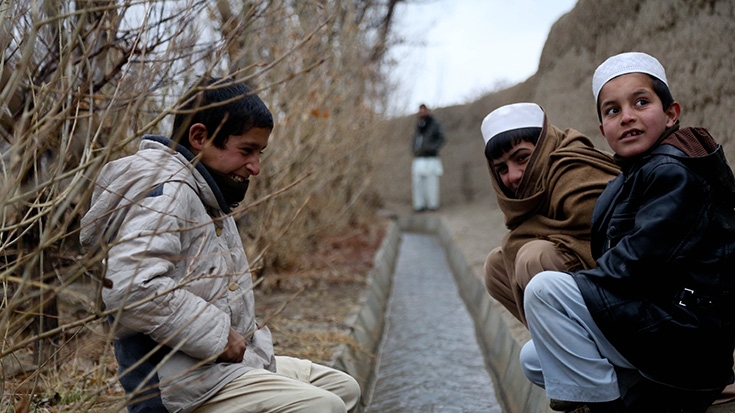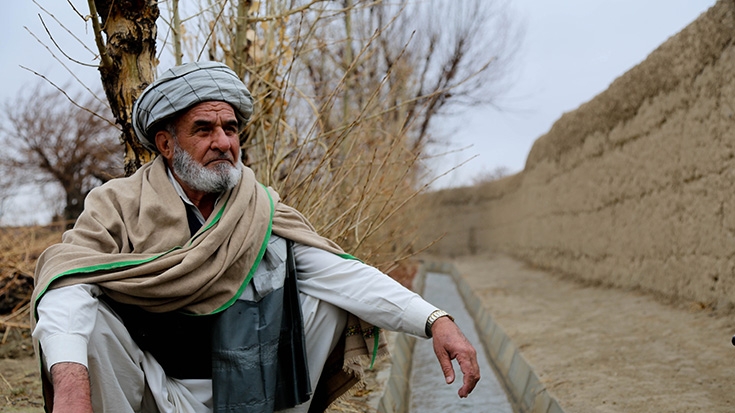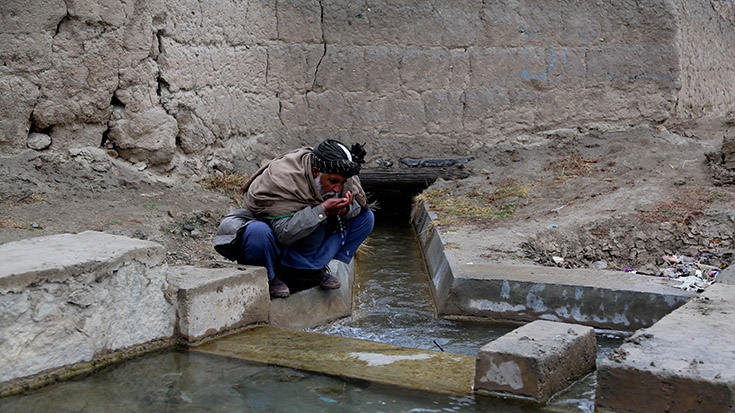SHAKARDARA DISTRICT, Kabul Province – On a cold winter day, farmers in Danishmand village of Shakardara district have gathered to discuss cultivation conditions and best techniques to prepare their land for farming.
Not long ago, farmers would have panicked if the water level was as low as it has been this year, raising fears of drought and severe water shortages. But as they talk, they are unconcerned, despite the lack of rain. Their fears have been eased by an initiative of the Ministry of Agriculture, Irrigation and Livestock’s On-Farm Water Management Project (OFWMP), supported by the Afghanistan Reconstruction Trust Fund (ARTF). The bottom of their irrigation canal has been lined with cement to decrease water wastage and provide farmers with a more dependable supply of water.
“We don’t fear drought that much anymore,” says Khan Zada, 50, who farms to support his family of 10. “Previously, a great amount of water was wasted as it soaked through the bottom of the canal, meaning that the water level was not stable. Now the water reaches directly where it is needed without waste, as the bottom of the canal has been cemented.”
The canal is a source of pride for local farmers. Before the initiative, villagers gathered up to 100 people and spent 20,000 Afghanis (almost $350) to clean the canal to prevent water loss. Now, thanks to the project, time and money are saved.



